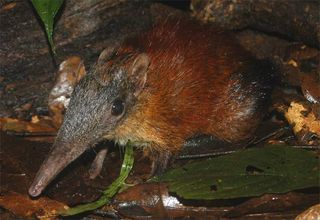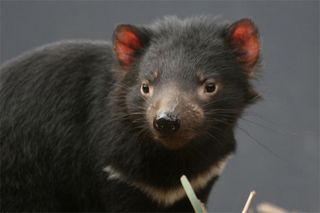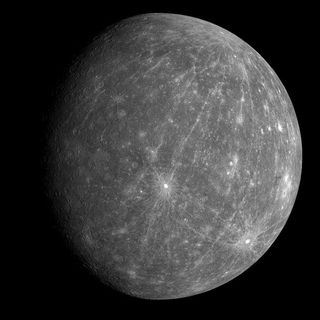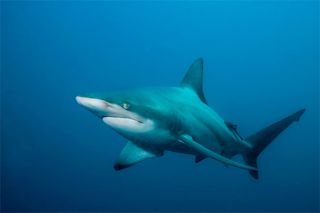This Week's Best Science Images
The Endangered Elephant-Shrew

Researchers said one in four mammal species is threatened with extinction. The Grey-Faced Sengi (Rhynchocyon udzungwensis), an elephant-shrew from Tanzania, is listed as Vulnerable because it is known from only two areas. It belongs to a group of mammals called Afrotheria that evolved in Africa over 100 million years ago and whose relatives include elephants, sea cows, and the Aardvark. The Grey-faced Sengi was only described this year after being caught on film in 2005 in Tanzania’s Udzungwa Mountains.
What a Devil

The now endangered Tasmanian Devil (Sarcophilus harrisii) is the size of a small dog and found only on the Australian island state of Tasmania, the Devil is the largest carnivorous marsupial in the world. The global population of this species has declined by more than 60 percent over the last 10 years due to a fatal infectious cancer called Devil Facial Tumour Disease (DFTD).
Seeing Faces

People see faces in cars, and they like this mug of an image model of the BMW 5 Series that used in the study. The BMW ranked high on the "power" scale.
Mercury s Mug

This view is from the MESSENGER probe s second Mercury flyby on Oct. 6, 2008. A young, newly-imaged crater at the very top of the image has large patterns of ray-like lines extending southward across much of the planet surface. The bright crater south of the image center is Kuiper, identified on images from the Mariner 10 mission in the 1970s. For most of the terrain east of Kuiper, toward the limb (edge) of the planet, the views are the first ever of that portion of Mercury.
Pregnant Without Sex

An Atlantic blacktip sharks, like this one, showed no signs of being pregnant, and she hadn t even mated. So scientists were surprised during an autopsy of the now deceased shark to find she had been carrying a baby.
Beavers Do Their Part

Beaver lodges, like this one in Wyoming, can help preserve local watersheds and habitat for wildlife. They provide critical habitat to some migratory songbirds.
Good-bye Glacier

Most of Alaska s glaciers are retreating or thinning or both, a new book by the U.S. Geological Survey reports. Click to see a before-and-after: On the left is an August 1941 photograph of the lower reaches of Muir Glacier. On the right, is an August 2004 photo of the same spot, showing that Muir Glacier has retreated out of the field of view and is now nearly 5 miles to the northwest.
Sign up for the Live Science daily newsletter now
Get the world’s most fascinating discoveries delivered straight to your inbox.
Most Popular


